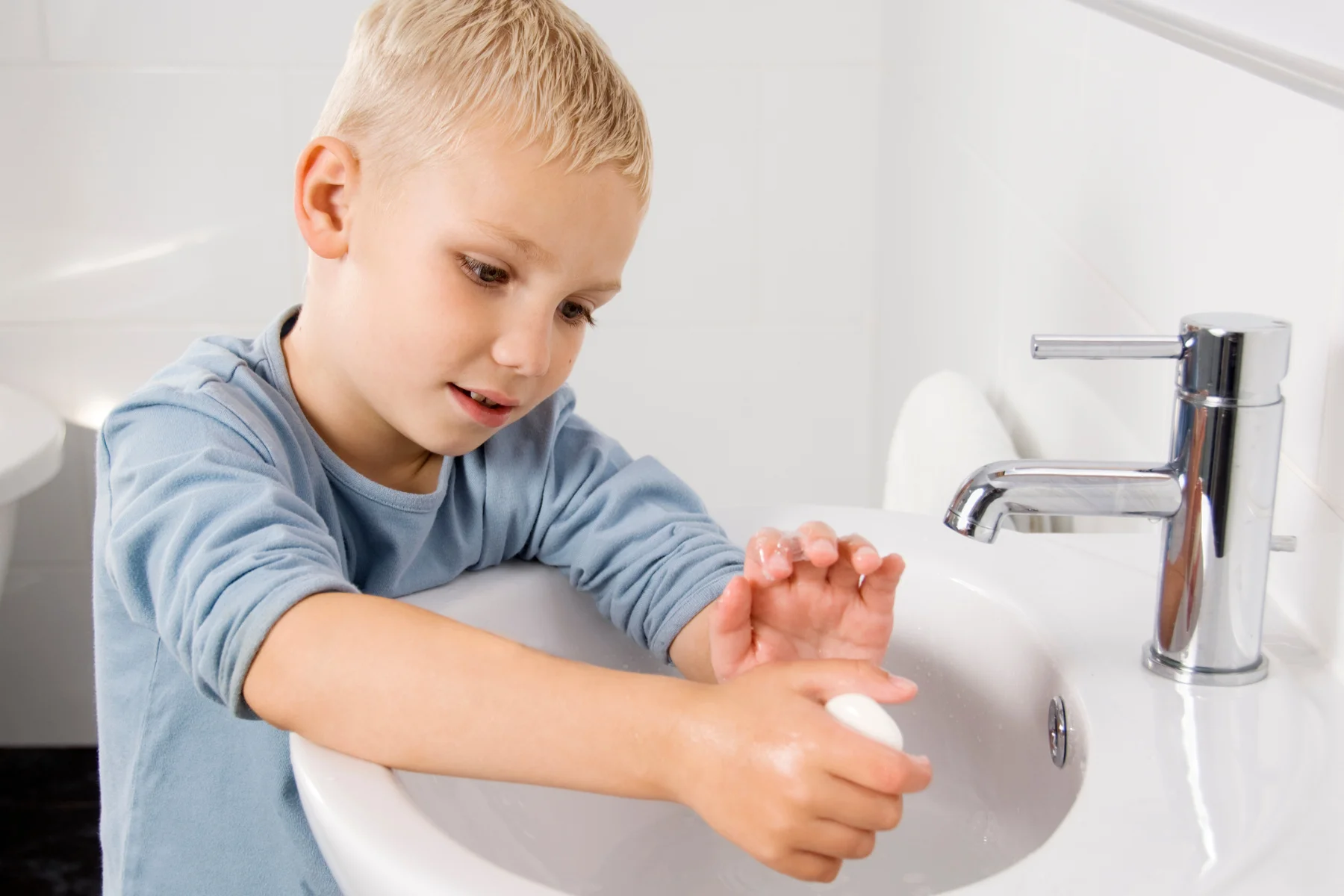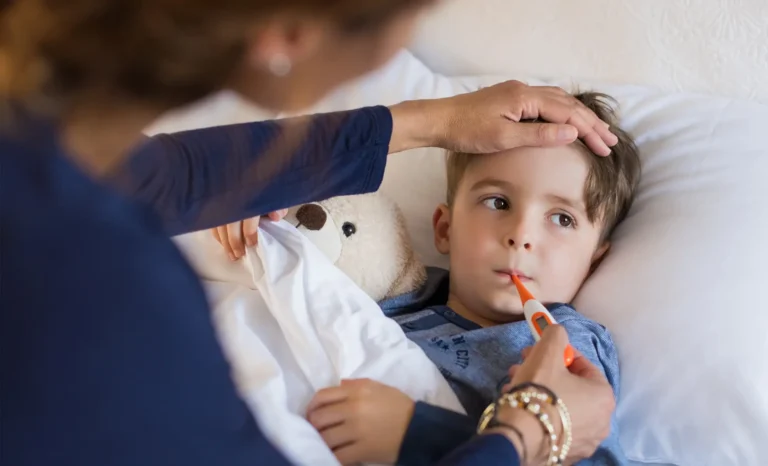I have three kids, ages 10, seven, and four. So, believe me when I say we see a lot of sickness in our house throughout the year. It seems as though almost every other week, one of my kids comes home with an illness they caught at school or when playing with their friends. Sometimes it feels like a cycle: one child gets sick, and then the illness goes through the whole household. As a parent, it can be frustrating!
It can also be hard for parents to tell whether their kids are suffering from an infection caused by viruses or bacteria. Fortunately, doctors have tests and other ways to tell the difference and determine the right treatment.
My office at Holston Medical Group treats a lot of kids with different kinds of viral infections, like the flu, COVID-19, the common cold, RSV, certain types of sore throat, and stomach viruses like norovirus. We also see kids with common bacterial infections such as strep throat, pneumonia, and ear infections.
Because the symptoms are so much alike, sometimes people think they can treat bacterial and viral infections the same. But the truth is that the treatments can be very different. Here are a few myths to clear up about these different types of illnesses:
Myth: A child who has a high fever MUST have a bacterial infection
Truth: Bacterial infections can sometimes bring higher fevers than the low-grade fevers often linked to viral infections. However, both viral and bacterial infections can spike a fever. When a child has a fever, it usually just means their body is trying to fight some kind of infection.
Most of the infections I see in my office are caused by viruses. In addition to a fever, children who have viral infections often show symptoms like:
- Coughing
- Runny nose and congestion
- Tiredness and body soreness
- Upset stomach and vomiting
- Diarrhea
Children with bacterial infections may have some of these same symptoms. Along with a higher fever, they may also feel ill for longer.
Myth: Viral infections can’t turn into bacterial infections
Truth: It’s true that viruses can’t become bacteria, and bacteria can’t become viruses. However, when your child’s body is fighting off a viral infection, bacteria can take advantage of a lowered immune system to attack and cause a secondary infection. For example, we often see children who have caught a cold (viral infection), and the congestion that lingers in their heads leads to an ear infection (bacterial).

Myth: Antibiotics help all types of infections
Truth: Antibiotics fight bacterial infections only. They don’t have any effect against a viral infection. That’s important to understand because there are risks if you use antibiotics when they’re not needed or effective.
When a child takes too many antibiotics or takes an antibiotic for the wrong kinds of infections, they can:
- Develop a resistance to that type of antibiotic
- Suffer unnecessary side effects, like heartburn, diarrhea, or worse
- Experience changes to their body’s natural gut biome, which can lead to more diseases
Myth: There’s nothing you can do to treat a viral infection
Truth: Though a viral infection can’t be treated with antibiotics, there are a lot of things you can do at home to manage your child’s symptoms and ease some of their suffering. For example, you can:
- Give over-the-counter medications like Tylenol® or Motrin® to reduce fever
- Use age-appropriate cough medicine to lessen a bad cough
- Make sure they drink fluids that replace the water and electrolytes lost during vomiting or diarrhea, such as Infalyte or Pedialyte®
- Keep them home from school or daycare to get extra rest
Myth: There’s nothing you can do to prevent a child from getting sick
Truth: Though it’s true that the average child gets eight to 12 infections every year, even young toddlers can learn a few simple tricks to avoid bringing infections home. You can teach them to:
- Wash their hands before eating, after using the bathroom, etc.
- Cover their mouths with their elbows when they cough or sneeze
- Stay away from other sick children
- Keep their hands out of their mouths

When to Call Your Provider
As parents, we all hate to see our kids get sick. We want them back on their feet as soon as possible – or to not get sick in the first place. That’s why I recommend that parents make sure their children get vaccinations like the flu shot. Even if your child hasn’t had one yet, it’s not too late.
With viral infections, rest and lots of fluids often give little bodies the boost they need to get back on their feet. But when fever reducers and extra time watching Bluey don’t seem to be helping – or if a fever lasts more than five days or is accompanied by concerning symptoms like lethargy, signs of dehydration, or breathing difficulty – it’s time to see your provider.
You can schedule an appointment online, or visit one of our urgent care centers in Abingdon, Bristol, or Kingsport. You can also use HMG’s FollowMyHealth patient portal to ask your child’s provider questions about care or medications.
I’ve treated all sorts of viral and bacterial infections, whether in my own kids or my patients. I know how frustrating they can be for children – and for parents, too! But here at HMG, we’re here through it all for you.







